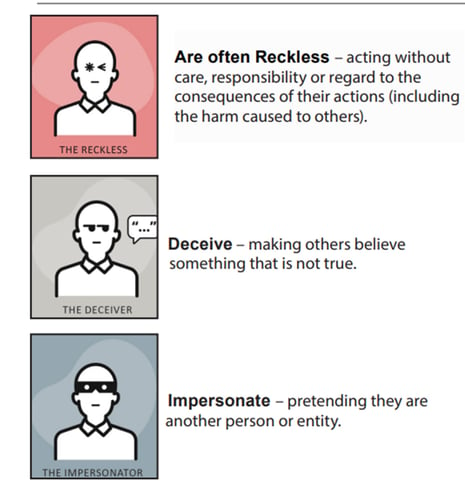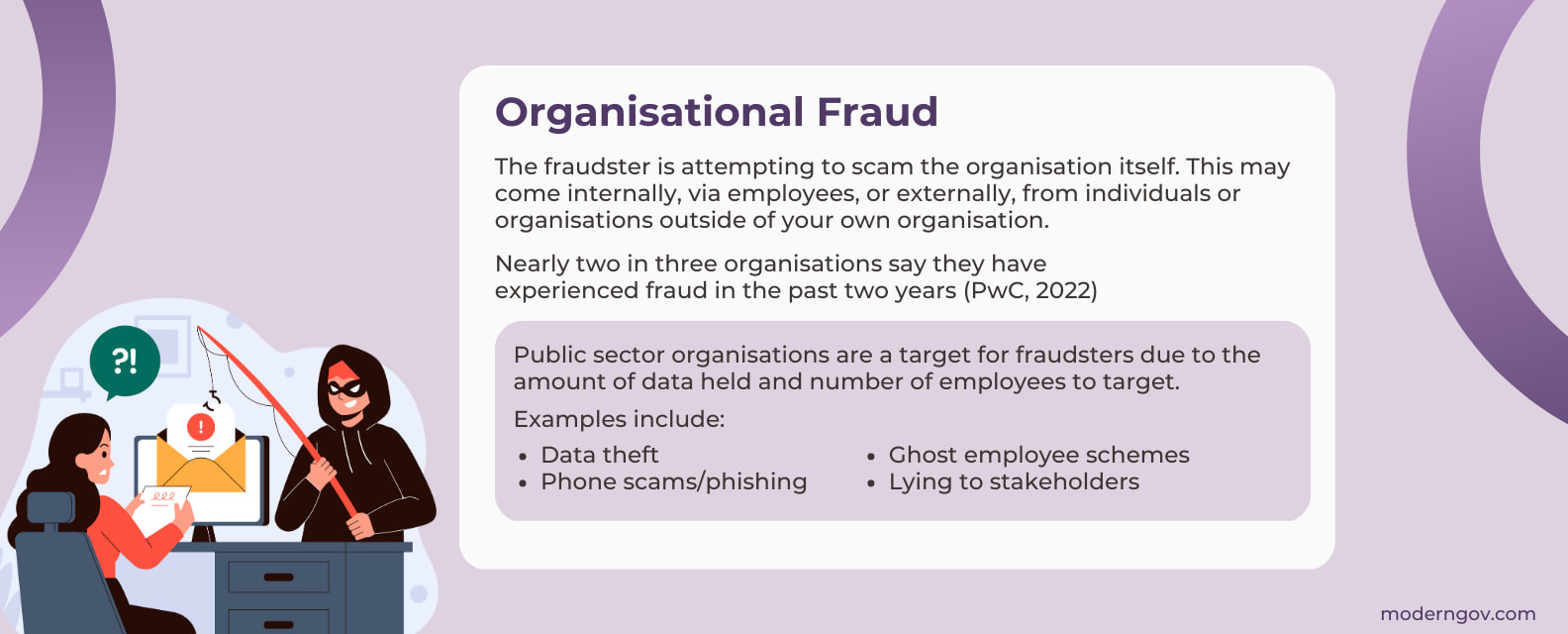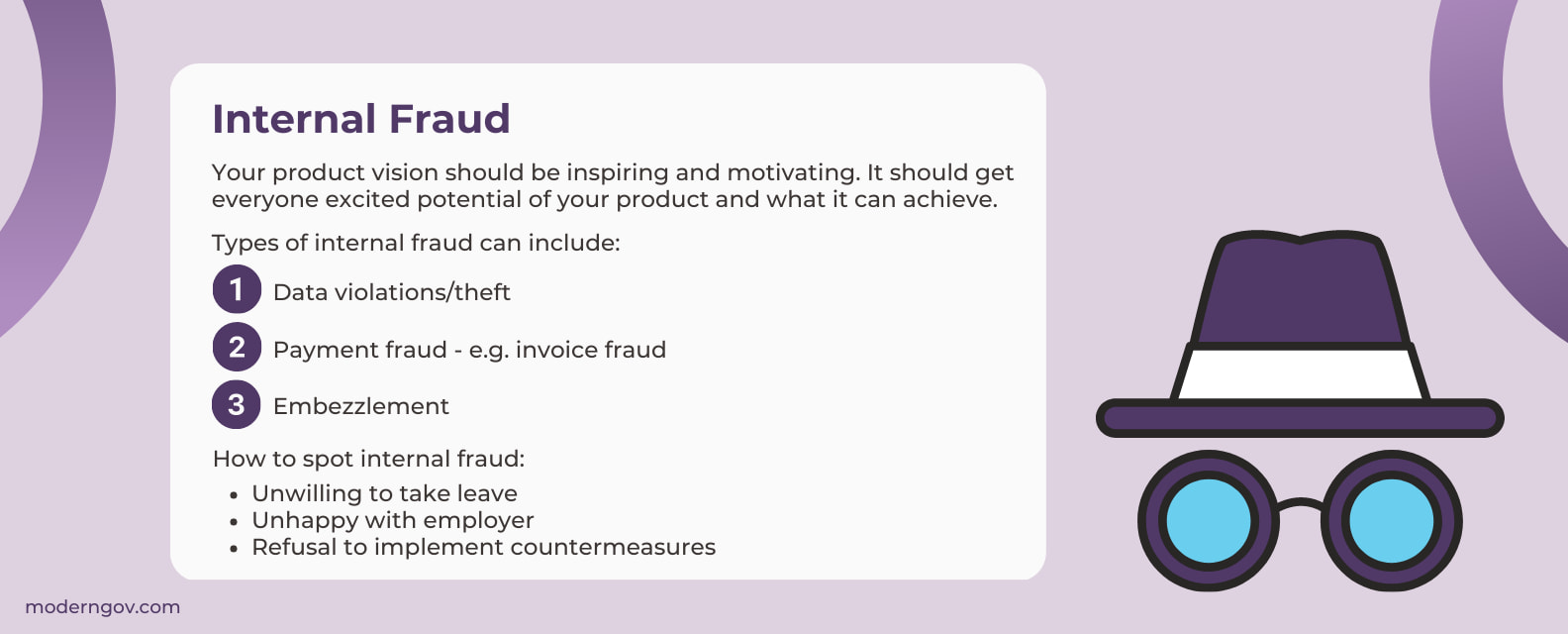Eliminate Public Sector Fraud: 5 Tips to Counter Fraud in the Public Sector
 Ross McDermott
·
5 minute read
Ross McDermott
·
5 minute read
According to the Public Sector Fraud Authority, Public sector fraud and error loss is estimated to cost at least £33bn a year, having a negative impact on efficiencies and the cost of public services.
Being able to identify and eliminate fraud, even in a non-fraud public sector role, is vital to ensure the safety and efficiency of your organisation.
Today, we’ll go over ways to identify fraud and steps you can take to eliminate public sector fraud within your organisation.
Contents:
- 5 Tips to Counter and Eliminate Fraud
- How Counter-Fraud Training Can Help You Detect, Prevent and Tackle Fraud
Identifying Different Types of Fraud
The first step to combatting and eliminating fraud is identifying the types of fraud that public sector organisations may face. Fraud can occur on both a personal level and an organisational level. Let's break it down.
Personal Fraud
On a personal level, the fraudster may target an individual to gain access to their identity, as a means of identity fraud, which they can then use to access bank accounts and other resources.
Often, this information is gained through phishing, where the fraudster may trick the target into giving away sensitive information, through emails, links and other means.
Fraudsters can target both personal emails and work emails, and whilst it may be obvious to not give away information to people that you don’t know, fraudsters may attempt to drop your guard disguising themselves as colleagues in your organisation or as other known organisations themselves.
In these cases, double-check links from people you don’t recognise, make sure you know who you’re responding to and never give away information that fraudsters can use to impersonate you. Always double-check with your manager, IT or Anti-Fraud team if you’re unsure or suspicious of something that might be a fraud.
Organisational Fraud
On an organisational level, the fraudster is attempting to scam the organisation itself. This may come internally, via employees, or externally, from individuals or organisations outside of your own organisation.
The government has highlighted a large number of testimonials and case studies of public sector organisations that have faced fraud and the type of fraud they have faced. For example, a Birmingham City Council employee made a fraudulent claim surrounding payroll, costing the organisation in excess of £16500, which is being pursued. This could be looked at as an internal case of organisational fraud.
Internal Fraud
Internal fraud can be classified as fraud committed by an employee against their organisation. This may be both small-scale, such as using false receipts to claim travel and accommodation allowances, or large-scale multi-coordinated attacks that can cripple an organisation.
The motivation behind an employee committing fraud against their own organisation may range from financial gain (short term or long term) to aggrievement against the organisation for reasons such as redundancy or other personal reasons.
In identifying cases of internal fraud, having an efficient expense tracking system and internal audit team goes a long way in creating a system that is difficult to exploit and easier to manage. Taking away some of the responsibility from the employees and helping them feel confident in handling the organisation’s money.
External Fraud
External fraud occurs when individuals or organisations outside of the organisation commit fraud against the target organisation. In some cases, the technique used to target the organisation may be the same as the techniques used for personal fraud.
The scammer may obtain personal information from the intended target via phishing or other means, but rather than use the information to target the individual, they use the individual’s information to target the organisation. This is especially relevant for those who may be working in areas such as finance or IT, and who have access to the organisation’s security and banking information.
Organisations must also be wary of dealing with new or unknown organisations, ensuring thorough research is completed so they know who they’re dealing with. Fraudulent organisations, or scammers posing as real organisations, can incur huge costs through fraud, including falsifying contracts and fake payments.
The Government Counter Fraud Profession identifies 8 fraudster personas to help the public and organisations identify what type of fraud is taking place. For example, The Deceiver persona is out to make others believe something that is not true or The Impersonator pretends they are another person or entity to access information.

Source: The Public Sector Counter Fraud Journal
5 Tips to Counter and Eliminate Fraud
While some types of fraud may be easier to spot than others, fraud is something that can happen to anyone. Here are 5 tips you can keep in mind to counter and eliminate fraud, keeping you and your organisation safe.
1. Know Who You’re Dealing With
Everyone knows not to give personal information to people or organisations you don’t know or trust, but it’s also important to keep in mind that scammers may pose as people or organisations you do know in an effort to gain your private information.
If you do suspect that a scammer is posing as someone you know, it’s better to err on the side of caution and check with the person making the request and confirm their identity via other means, such as a phone call or correspondence with someone who knows them, such as their manager.
2. Communicate With Your Anti-fraud, IT or Senior Leadership Team
Although you may feel confident in taking matters into your own hands, it’s equally important to communicate with your anti-fraud, IT or senior leadership team when it comes to suspected cases of fraud.
They can offer you advice on the best course of action to take if you are a suspected victim or are suspicious of something that may be a fraud.
Communicating with these teams also helps make them aware of the ways in which scammers may attempt to fraud their employees or the organisation itself, allowing them to review their security systems and advise the steps other employees can take to be safe.
3. Conduct a Comprehensive Fraud Risk Assessment
A fraud risk assessment aims to identify and understand your organisation’s vulnerability to both internal and external fraud. This can range from reviewing and updating your security systems to looking at the processes involved in an organisation’s expenditure, how they spend money and what employees have access to.
In their core discipline document, the government highlights the process of a fraud risk assessment and the key competencies, principles and guidance for fraud risk assessments.
4. Act Quickly if You Do Become a Victim of Fraud
In the event you are a victim of fraud, acting quickly is the best way to protect yourself and your organisation. Changing all your passwords is a good first step, even if you think a scammer may only have access to certain accounts they may also be able to figure out other information with that access.
If the fraud happened on an individual level, it’s also important to inform senior leadership, IT or other relevant teams.
It may feel daunting informing your organisation that you’ve been a victim of fraud, however, your organisation is likely to have systems in place to support you if you do become a victim. Informing your organisation means they can protect other employees against fraud in the future and assist you in recovering anything you may have lost.
If an organisation becomes a victim of fraud then bringing the case to relevant authorities as soon as possible is important to mitigate any damage and give authorities enough time so that they can act on identifying the fraudsters.
5. Complete Training to Be More Effective at Identifying and Countering Fraud
If your organisation has minimal capability at countering and identifying fraud, completing training can be a good way to learn some of the expertise around identifying fraud, countering fraud and keeping employees safe.
If your organisation does have a dedicated anti-fraud team, holding training sessions for employees on identifying and countering fraud can be a good, cost-effective way to bring employees up to speed on how they can keep themselves safe and in turn protect the organisation.
Attend our Counter-Fraud Training Course to Gain the Tools to Identify, Prevent and Tackle Cases of Fraud
Gain the necessary tools and techniques to identify, prevent and tackle cases of fraud with our expert-led Counter-Fraud Training for the Public Sector course. View the full agenda here.
Previous experience in EdTech and public sector training. Striving to provide public sector professionals with resources and content to improve their skills and achieve their goals.


%20COMPRESSED%201.jpg?width=800&height=525&name=1%20(2)%20COMPRESSED%201.jpg)
%20compressed.jpg?width=1584&height=640&name=2%20(1)%20compressed.jpg)






